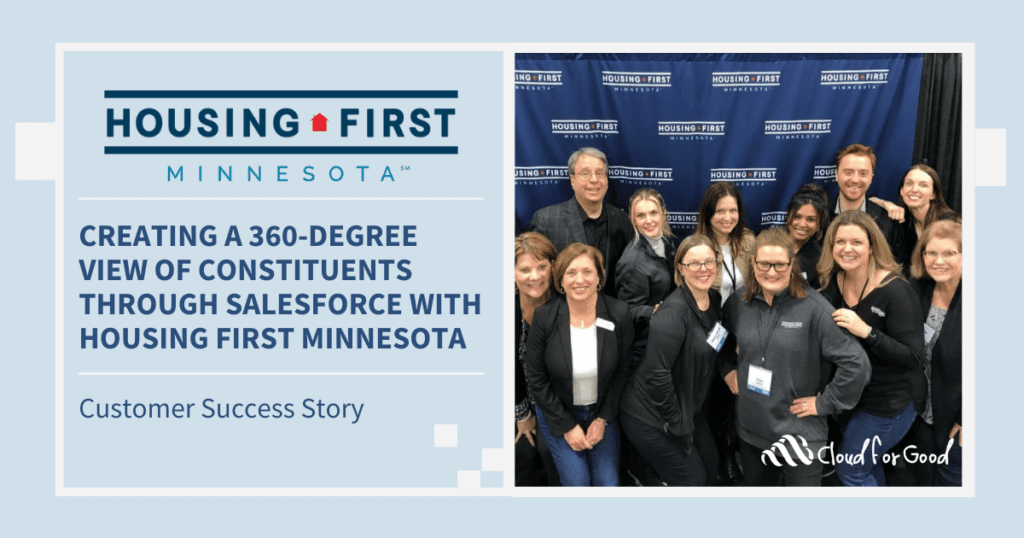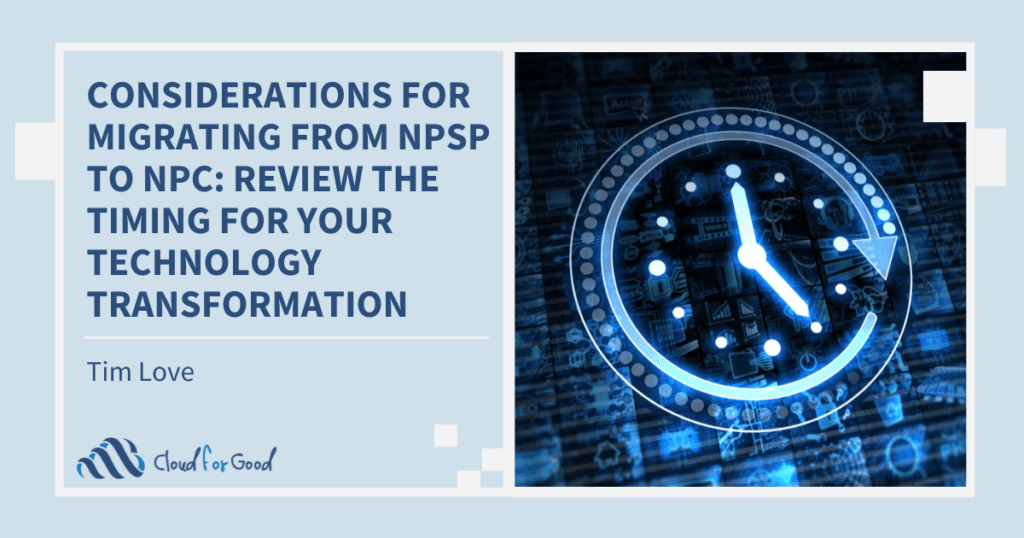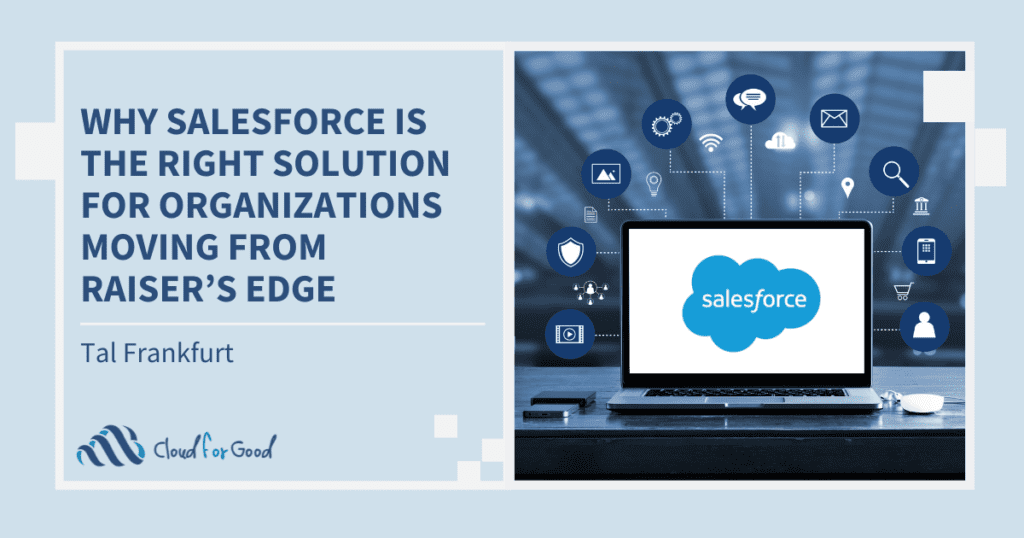Are you a nonprofit considering a move to Salesforce? If so, please keep reading!
At Cloud for Good, I have the pleasure of speaking with new prospective clients every day. I get to learn why they are interested in Salesforce and about the legacy systems that aren’t working so well for them. During my time here, I have found some key items that need to be discussed during that first phone call and I encourage you to prepare for these prior to that initial call with us, or any Salesforce consulting firm for that matter. These key elements will allow us to make that first call incredibly productive and will help us provide an overview of how we can efficiently bring Salesforce into your organization!
I like to think of these as a slight modification to the 5W’s and 1 H approach. In this case it will be 4 W’s and 1 H – Who, What, When, Why, How (although not in that order).
5. Why are you considering a move to Salesforce?
In the number 5 spot is the question of why. Why did you reach out to Cloud for Good? Why are you considering Salesforce?
There is likely a driver that caused you to reach out to us – whether it be unhappiness with your current system, no system in place at all, or even just a general interest in what Salesforce can do for you. This is important for us to understand. If there are pain points you are experiencing with a current system (data silos, ineffective reporting, data management that isn’t robust enough for your organization, etc.) start to think about those and come prepared to share those pain points. If we can understand what your pain points are from the beginning, we can create a solution to alleviate those pain points within Salesforce.
4. What do you want to do?
Next, we need to know what specifically it is you want to do.
In an ideal world (one with no budgetary or time restrictions), what do you want to see Salesforce do for you? Do you want to manage donors, funders, peer to peer fundraisers, program participants, services you are providing, etc.? You may not be able to do everything you want at one time, but if we can understand the breadth of your Salesforce goals, we can work together to formulate a phased rollout approach. Thus allowing you to start reaping the benefits of Salesforce, while planning for future expansion.
3. Who is going to be involved in the project?
It is extremely important that we understand who from your team will be involved in the project. Is there buy-in needed from the executive level or from the Board? What team members will participate in the implementation?
Making a move to a new system like Salesforce can be a very big change for any organization. This type of change is best managed when there is support and buy-in from the top. It’s crucial for us to understand whether your CEO, Executive Director, or Board of Directors is supportive of the move to Salesforce. If they aren’t, we can work together on a strategy to educate them about Salesforce’s benefits for your organization.
We’ll also need to understand who from your team you envision being involved in the project and what their role would be throughout implementation. This will help us provide context to the consulting team that will be performing the implementation for you.
2. When do you want to have Salesforce fully functional for the organization?
The question of “when” is always the most enjoyable question for me to ask. Every time I ask a new client this question I receive the same answer….yesterday!
While we understand that you probably want to make the transition to Salesforce as soon as possible, we also need to realistically understand your time intentions for a launch. Do you have a contract with your current database vendor that is expiring? Do you have a big event in the near future that you feel would be beneficial to have Salesforce in place? When is the busiest time of year for the fundraising or program teams? These are all important questions to consider as you think about when makes the most sense to conduct an implementation.
You’ll want to ensure that your team has availability to take part during the implementation. We’ll need participation throughout the entire process but most importantly during the Analyze phase (or the time where we will discover your business processes and how you work), as well as in the Deployment phase (where we’ll need to train you on Salesforce).
There also may be times when it’s not the right time to implement Salesforce and this is just as important to consider.
1. How much do you have to spend on implementation?
The number one item I would encourage you to think about is budget. How much do you have in your technology budget for the organization? How much is set aside for a database transition and ongoing database maintenance? If no budget is set aside, how much can you budget for in the next fiscal year? Can you move funds around in the budget to cover the costs this fiscal year?
Budget is crucial. If you tell us you have no budget, there won’t be much we can offer you. As much as we would like to offer our services for free, we can’t (soon we will be launching Grants for Good, granting 1% of our profit to eligible organizations). It’s also very important to understand that while a successful implementation will require an implementation budget, the return on this investment should provide justification for the expense.
So if you are considering a move to Salesforce soon, please don’t hesitate to reach out to us and we look forward to starting the conversation around how Salesforce can help you better achieve your mission!
Some of these additional blog posts may interest you:
- Implementation Best Practices e-book
- When Not to Implement Salesforce
- Moving Your Database to the Cloud: Key Considerations to Prepare Your Move





